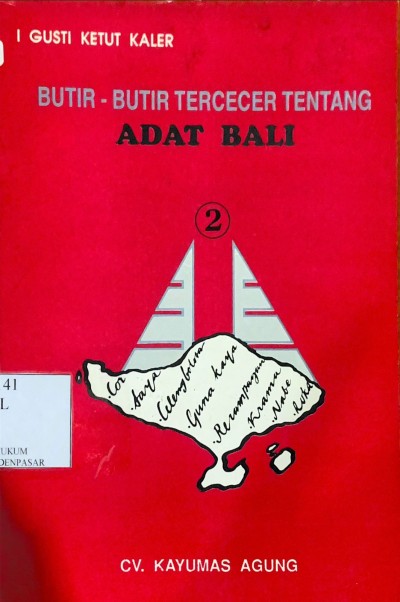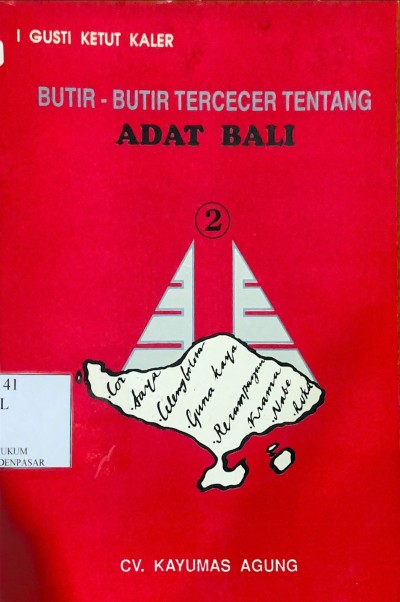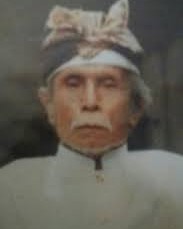
- Original Title: Butir-butir tercecer tentang adat Bali (Scattered Grains of Balinese Customs)
- Author: I Gusti Ketut Kaler
- Archive Type: Book
- Written: 1970-1980s
- Published: 1978
- Publisher: PT Bali Post
- Place: Denpasar
- Available File(s): Photos
- Keywords: Tri Hita Karana, cultural theories, environmental humanities, Hindu, Bali, social harmony.
- Link: https://books.google.com/books/about/Butir_butir_tercecer_tentang_adat_Bali.html?id=i6RGAAAAMAAJ
Butir-butir Tercecer was an influential work among the Balinese people written by Hindu leader and cultural critic I Gusti Ketut Kaler. This book consists of 185 titles, among which 71 titles have been published in the form of Book Volumes 1 and 2 under the same title and were quite popular around 1983 so some were reprinted twice. The writing title in this rubric contains terms, definitions, and actualization of Balinese customs concerning various aspects such as; religion, customs, society, culture, architecture, agriculture, economy, government, and so on.
Among many themes, the idea of tri hita karana, written on pages 85-89 (1983 edition), was the most popular one. It is a “wisdom” commonly understood in Balinese culture, but here in the book it is reshaped and rearticulated by Ketut Kaler to make it more understandable for popular readers. This principle contains cosmological, theological, and sociological principles at the same time. It believes that there are 3 (three) ways or principles that make humans enjoy an abundant life: harmony with God, harmony with the environment or non-human beings, and harmony with other humans. This principle has been applied in many of Balinese architecture or writings on cultural studies.
In the context of the studies of religion, coloniality, and ecology, tri hita karana will be a fascinating resource that both critiques the colonial view of anthropocentrism and capitalist projects of tourism under the name of natural “conservation.” The flourishing of human and the touristic conservation would not be beneficial and would not generate abundant life if they do not consider this three-fold harmonies.
Photo(s)


Source(s)
- I Gusti Ketut Kaler, Butir-butir Tercecer tentang adat Bali (Denpasar: PT Bali Post, 1978).
- I Putu Surya Anggana, “Tri Hita Karana as a form of pro-environmental behavior in Bindu Traditional Village,” International Journal of Green Tourism Research and Applications 4, no. 1 (June 2022): 30-37.
- T. Nirarta Samadhi, “Making Cosmo-religious Landscapes: The Design of a Balinese Town’s Civic Center (Bali, Indonesia),” Habitat International 28 (2004): 103-122.
Written by Abel K. Aruan (November 17, 2024); Edited by Abel K. Aruan (January 17, 2025).